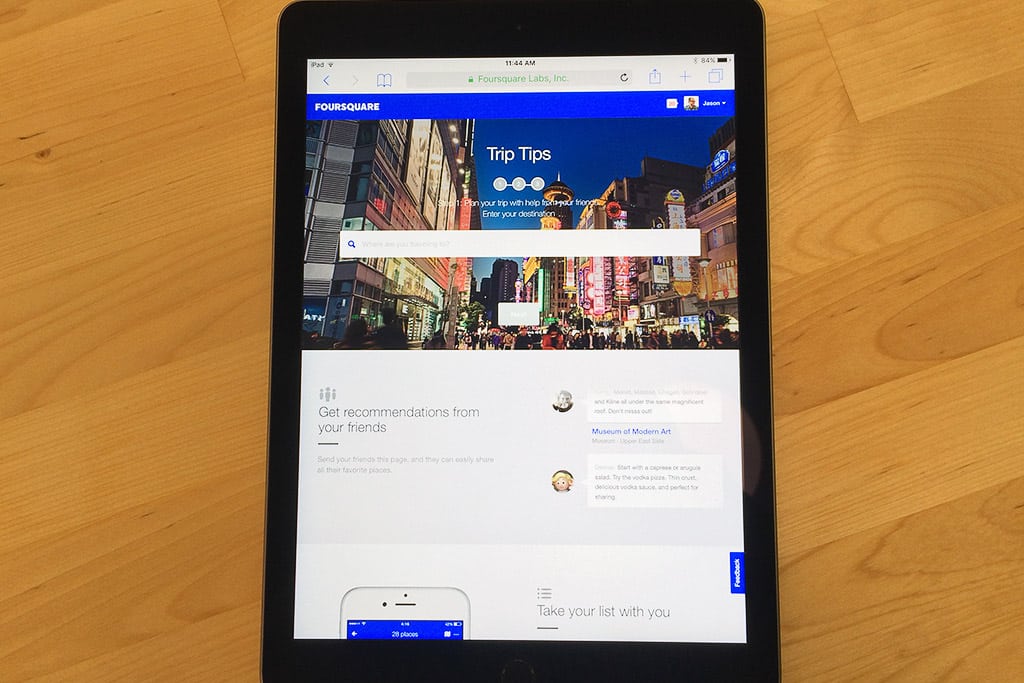Skift Take
Platforms for discovery of food and experiences can be a double-edged sword, and play us back more of the same.
Back in 2006, I would joke with my friend Naveen that all I wanted was a location-based del.icio.us. A way to save a bunch of places you wanted to try in a city, similar to how the old bookmarking service let you save web pages of interest, but with an added, location-aware twist.
So, walking around the East Village and being reminded by SMS of that interesting espresso place that you read about, or the great hidden Dim Sum that you kept meaning to try.
Naveen went on to found Foursquare with Dennis Crowley and created a mobile platform for this type of urban loving exploration. Though sometimes I felt the best utility of the service was buried under other layers of sticky functionality (check-ins, etc).
I found the most compelling feature to be the ability to annotate the world with what is interesting and worth your time, city after city. I still get a chuckle when someone tells me they came across a tip of mine in Hong Kong or further afield. Little ambient markers to let others know where we’ve been, and which cocktail to try.
Recently, the service launched something that most closely approximates the conversation Naveen and I were having on our Houston street walks so long ago. Marsbot is an SMS bot, affectionally named after the visual designer, Mari Sheibley, that gave Foursquare a lot of its early character and visual identity. It is simple, location aware, and SMS based. Marsbot gives you recommendations on-the-fly based on where you are, and gradually learns about your preferences over time with a little bit of input.
It is an additional little service layer that is probably a step towards what is coming in a lot of media and interface design: what I call the WeChat-ification of U.S. technology. Using a simple messaging interface to get things you need done. Instead of opening a ton of different apps, you’ll engage with one messaging interface, be it LINE, Facebook Messenger, or whatever to order a car, find the good omakase sushi, or change your flight.
The implications for the travel industry are huge from an inspiration, discovery, and customer experience standpoint. But at the same time, I’m also reminded that the filter bubble that many of us are experiencing in our Facebook newsfeed in highly politicized times — the idea that your own beliefs are played back to you — can also be the case for travel and exploration.
In a recent piece in the Verge, Kyle Chayka articulates the idea of this global “AirSpace” which he describes as a harmonization of the tech and creative class tastes around the world.
He cites Foursquare as an enabler of this: quoting a Berlin based entrepreneur who relies on the platform to find out where to go in a new city:
“The new cafe resembles all the other coffee shops Foursquare suggests, whether in Odessa, Beijing, Los Angeles, or Seoul: the same raw wood tables, exposed brick, and hanging Edison bulbs… the coffee roaster Four Barrel in San Francisco looks like the Australian Toby’s Estate in Brooklyn looks like The Coffee Collective in Copenhagen looks like Bear Pond Espresso in Tokyo.”
So, even as we are realizing the promise of technology to help us find and remember the hidden nooks and crannies of interesting cities around the world, technology has also enabled this sameness. And similar to how we are caught in filters of our feeds, we are seeking out spaces that people like us want to experience. Missing out on weird, wild serendipity in the process. The stuff that you will always remember.
Anthony Bourdain has a clever approach to break through this bubble: invoking what he calls “nerd fury.” He would intentionally write how he had the best dish somewhere on a highly passionate local message board and wait for the dissent to come pouring in. He encourages you to “then sit back and enjoy the show as the internet foodie elite each jump into the fray to defend their own picks to the death.” A simple recipe for finding the deep B-side cuts as opposed to what the conventional favorite is.
Of course, there’s other ways. Asking the Chinese grandmother where her favorite place to go is, getting deep into recommendations from sources further afield, and also allowing locals to steer you in the right direction after building initial rapport and trust that you’re not going to blow up their secret spot.
In a world of instant and contextual information and whatever we want at our fingertips, there are still many things that are hidden for a reason, deliberately not accessible and worth panning for. And they still exist in cities as different as Nairobi, Copenhagen, and Kyoto, waiting to be discovered.
Our digital social platforms are great for a quick fix and provide a lot of utility, but the truly rewarding experiences in travel reward shoe leather and good old fashioned analogue excavation. And I don’t see that changing anytime soon.
The Daily Newsletter
Our daily coverage of the global travel industry. Written by editors and analysts from across Skift’s brands.
Have a confidential tip for Skift? Get in touch
Tags: food and drink, foursquare
Photo credit: Apps like Foursquare aid in local discovery while also keeping users in a recommendation bubble. Skift
